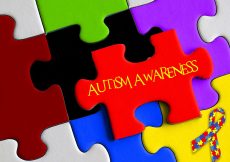A baby usually poops around five to six times per day or even more than that. Some newborns poop as many times as they are fed. Regularly checking their poop can help parents figure out if they are feeding well or having any health issues. Therefore, it is important to monitor the frequency of bowel movement and the quantity, texture, and consistency of a newborn’s poop (1).
Read about the characteristics of breastfed baby poop and conditions, where you might consult the pediatrician.
How Often Should Breastfed Babies Poop?
The number of times a breastfed baby poops can tell you whether or not they have enough milk per day. Sometimes a baby might poop twice or thrice a day or even more. The frequency of poop increases gradually by the fourth or fifth day and will continue until around six weeks.
Some babies might poop after every feeding, which is normal. It happens due to the gastrocolic reflex, which causes the digestive system to function whenever food reaches the stomach (2).
What Is A Normal Breastfed Baby Poop Like?
Meconium is the first poo your baby will pass after birth. It is usually greenish-black and has a sticky texture (1) (3). It has no distinct smell, so you might not know when your baby has pooped.
In some cases, the baby might pass the meconium before birth. This happens because the baby might be under stress or due to a lack of oxygen. When the meconium is passed into the amniotic sac, there might be chances the baby inhales it into the lungs. This leads to meconium aspiration syndrome (MAS) that causes breathing problems in newborns.
After three to four days of birth, your baby’s poop will become lighter in color and less sticky in texture. This color change happens when your baby starts to digest the breastmilk (1). The color of a healthy breastfed baby’s poop is slightly green or mustard yellow. It has a creamy texture, and sometimes, it might also appear seedy.
It is natural to see changes in the color of your baby’s poo. There is nothing to worry about since it is usually related to the food you eat or your baby is eating (once the baby starts eating solids).
How Does Poop Change With Solids?
When your baby starts to have solid food, the color and consistency of their poop also change. During this time, the poop becomes more firm and brownish (4). The poo also starts to become smelly with the introduction of solid food. You might also find a few chunks of food in your baby’s poop (seedy poop).
- Greenish-brown: Green poop is completely normal and can be due to having green food.
- Dark green: It might be due to the presence of iron in the food, and the source can be an iron supplement or an iron-fortified baby formula (4).
- Darker yellow: This is usually found in formula-fed babies. The characteristic color can be either yellow or green. It has a stronger smell and a thick pasty consistency.
When To See A Doctor?
You should immediately consult your child’s pediatrician or healthcare provider if you notice the following in your baby (4):
- Red poop: Red color might be because of having beets in the diet. However, if that is not the case, then red streaks in the stool might indicate blood. A smaller amount could be due to infant constipation, whereas, the higher amount might indicate some internal problem.
- White poop: Colorless, chalky, or white poop might mean a liver or gall bladder problem.
- Black poop: This is normal until two to three days after birth. However, if it continues for about a week of birth, it might indicate blood in their gastrointestinal tract.
- Watery poop (diarrhea): If an infant is suffering from diarrhea, they might poop 10-12 times a day, causing dehydration.
- Frothy/foamy poop: This happens when there is an increased concentration of lactose in the breastmilk.
Variations in the baby poop are normal from time to time. There might be a wide range of colors, textures, and consistencies indicating the baby’s health and feeding pattern. However, it does not mean that all of them indicate some internal problem or disease. Checking with your baby’s healthcare provider or pediatrician can help in proper diagnosis and timely management.
References:
MomJunction’s articles are written after analyzing the research works of expert authors and institutions. Our references consist of resources established by authorities in their respective fields. You can learn more about the authenticity of the information we present in our editorial policy.
The following two tabs change content below.




































